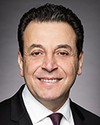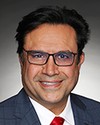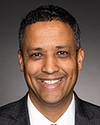To understand this, I think, without going on too long—but it is a very interesting story for the agency—you can think about the unprecedented volume of demands we had and the strain it was going to put on not only our call centres but on processing at other parts of the agency. This was coupled together with the physical distancing that we had to adhere to and with keeping people at home to try to flatten the curve and not spread the virus.
That was quite an interesting combination of factors to have to put in place, so we did realign the agency. We pushed a pilot project that we had for enabling call centre agents to take calls remotely. It was going to be a small-scale project and it turned into one on a very big scale because of the nature of it. We had to get people on the phones to answer the questions. Our call centre volumes are very high. That was one thing we did.
We had other parts of the agency that couldn't work because they needed the access to the workspace, but they had to stay home, and because we slowed down our audit, verification and collection activities, we had those people available. We put out a call and said, “If anybody can help with the phones, please put your name forward.” That's—






